QUEEN VICTORIA MEMORIAL
QUEEN VICTORIA GARDENS AND ST KILDA ROAD AND ALEXANDRA AVENUE AND LINLITHGOW AVENUE MELBOURNE, MELBOURNE CITY
-
Add to tour
You must log in to do that.
-
Share
-
Shortlist place
You must log in to do that.
- Download report
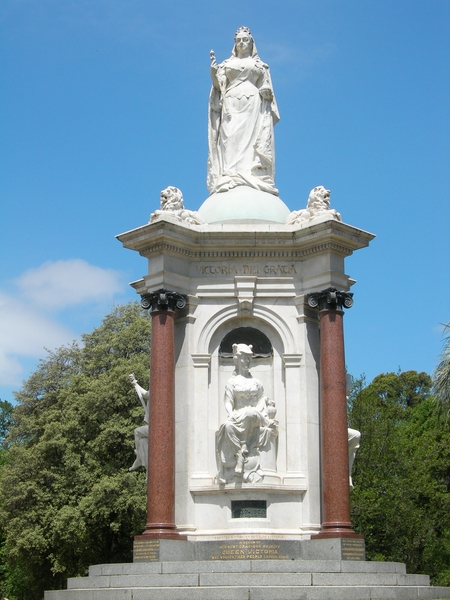

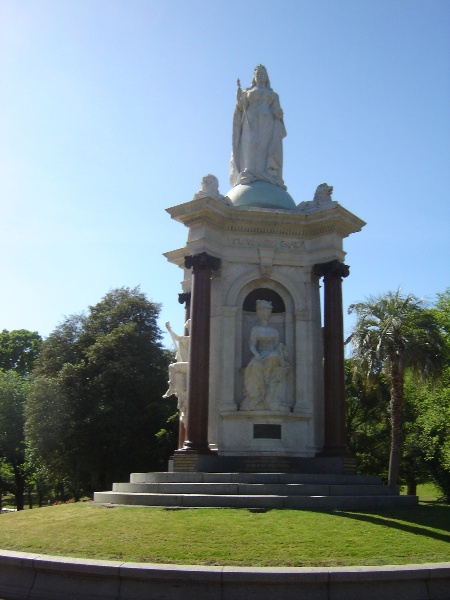


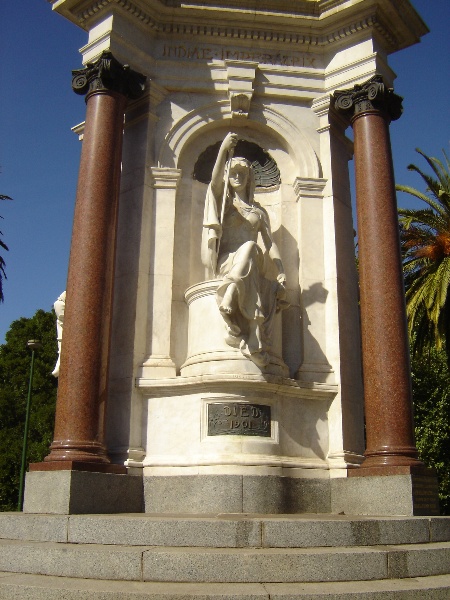
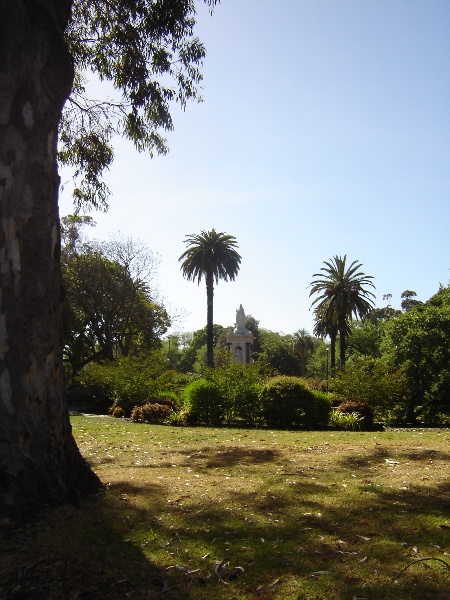
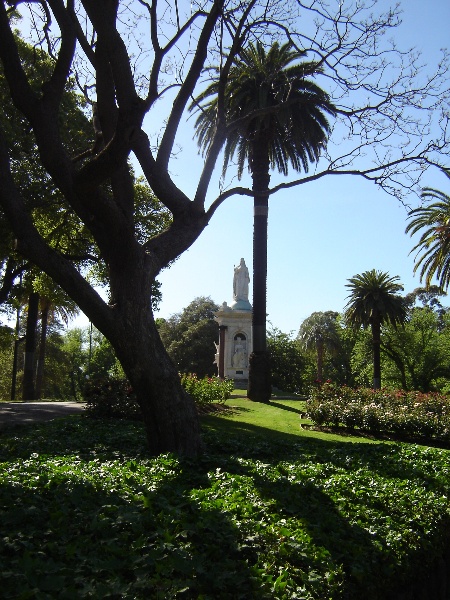

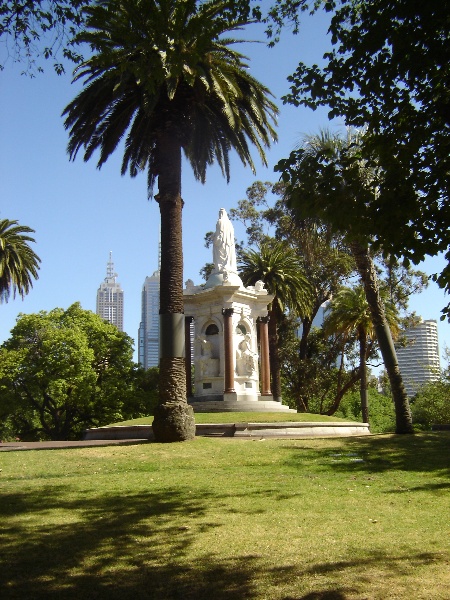

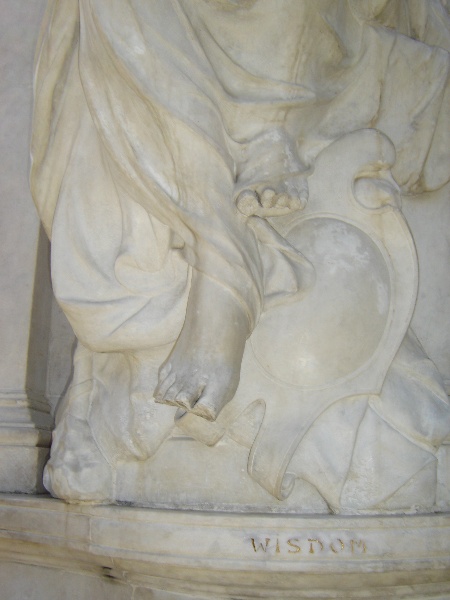


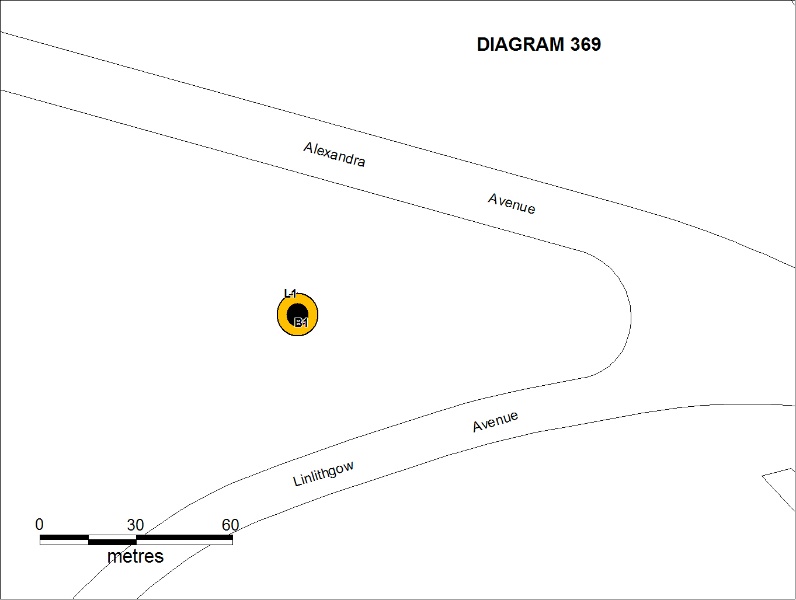
Statement of Significance
What is significant?
The Queen Victoria Memorial in the Queen Victoria Gardens is located near the intersection of St Kilda Road and Alexandra Avenue, Melbourne.
On the death of Queen Victoria (1819-1901), the citizens of Melbourne decided that they should build a memorial tothe Queen. Funds for the memorial were raised through public subscription and James White (1861-1918), who had a distinguished record in memorials and sculpture, was chosen to undertake the work. An appropriate site was chosen near the new Alexandra Gardens. Substantial work had to be undertaken at the site to prepare it for the memorial. Under the supervision of the City of Melbourne's Surveyors Office, buildings were demolished, soil was removed and the whole area landscaped into a more pleasing shape with new paths and garden beds. A mound was created to make the memorial more prominent and easily viewed from St Kilda Road.
The memorial itself is over 10 metres in height the figure of the Queen represented as Empress with crown, spectre and orb, symbols of her regal power. The figure of the queen is flanked by imperial lions. The Queen and the other figures in the memorial are of Carrara marble from Italy, while the architectural features of the memorial are of Harcourt and Swedish granite. The allegorical figures of four young women in an art nouveau style represent justice, wisdom, history and progress. These figures also record the Queen's life with the dates of her birth, accession, marriage and death.
The memorial was not without controversy and White was criticized at the time for sending the carving work away to Italy, and not using Australian labour. The memorial was also considered obscure in meaning and not a good likeness of the Queen. Because of this, White's work on the memorial ruined his reputation.
The memorial was unveiled on Empire Day (May 24) 1907 by Lt. Governor Madden. There were speeches and a military guard of honour. Madden spoke of 'presenting Victoria's Statue to Victoria's People'. The Lord Mayor in his speech outlined the Council's work on providing a suitable setting for the memorial. Initially the memorial could be seen quite clearly from St Kilda Road. Later tree growth and road re-alignment has reduced the impact of its dramatic setting.
How is it significant?
The Queen Victoria Memorial is of historic and aesthetic significance to the state of Victoria.
Why is it significant?
The Queen Victoria Memorial is of historic importance to the State of Victoria as a memorial which contributed to the formation of a national identity at Federation, celebrating links with Britain and the Empire as well as celebrating the life and reign of the monarch for whom the Colony and the State was named.
The Queen Victoria Memorial is of aesthetic importance to the State of Victoria as a part of the beautification of the Melbourne with appropriate parks, gardens and memorials.
-
-
QUEEN VICTORIA MEMORIAL - History
On the death of Queen Victoria (1819-1901), the citizens of Melbourne decided that they should memorialize the Queen in some way. Statues of the Queen had already been erected in Geelong (1904), Bendigo (1903) and Ballarat (1900). Even Sydney had a statue of the late Queen, but not the capital of the state which bore her name. These other statues had been erected to celebrate the Diamond Jubilee of the Queen's accession to the throne in 1897. Queen Victoria's image was already familar through stamps and commemorative souvenirs from the Jubilees and after her death. Queen Victoria was the first monarch whose image was widely distributed through photography and the first to appear in moving pictures. Queen Victoria, herself, was very conscious of her image and image making.
An appropriate site was needed for the memorial. Land in the Domain close to the Yarra River was reserved for the memorial and gardens. Substantial work had to be undertaken at the site to prepare it for the memorial. Under the supervision of the City of Melbourne's Surveyors Office, buildings were demolished, soil was removed and the whole area landscaped into a more pleasing shape with new paths and garden beds. A mound was created to make the memorial more prominent and easily viewed from St Kilda Road. The site was adjacent to the new Alexandra Avenue and gardens which were named after the new Queen, Victoria's daughter in law. The arrangement of these gardens were partly undertaken by Carlo Cantani who was employed by the MCC.
The memorial was not without controversy and White was criticized at the time for sending the carving work away to Italy, and not using Australian labour. Questions were raised at Trades Hall about this matter, although this seemed to be at the instigation of another artist. There was a great deal of rivalry to get the Commission for the Memorial in the first place. At one time it appeared that McKennal would be awarded the work. Whether or not White's work on the memorial ruined his reputation, as some have claimed, is open to question. (see White's entry in the ADB) . Certainly the composition of the Queen Victoria Memorial was not as successful as his Boer War memorial in Ballarat undertaken at the same time or Benjamin McKennal's work of Queen Victoria also located at Ballarat. White had proposed to further elaborate the design with marble steps approaching the monument and a design of marble dolphins, tridents, boats and sails to make explicit the maritime power and supremacy of Great Britain during Victoria's reign. The Maritime theme is utilised in his Queen Victoria at Bendigo. White's grander scheme was not enacted because of monetary constraints. One reason that White wanted a further distance between the public and the memorial is that he was concerned that people were touching the memorial particularly the toes on the figures on the pedestal. His concerns were genuine as a number of figures have lost toes.
QUEEN VICTORIA MEMORIAL - Plaque Citation
The citizens of Melbourne decided this memorial should be constructed after the death of Queen Victoria in 1901. Funds for the granite and marble memorial were raised through public subscription and sculptor, James White, undertook the work.
QUEEN VICTORIA MEMORIAL - Permit Exemptions
General Exemptions:General exemptions apply to all places and objects included in the Victorian Heritage Register (VHR). General exemptions have been designed to allow everyday activities, maintenance and changes to your property, which don’t harm its cultural heritage significance, to proceed without the need to obtain approvals under the Heritage Act 2017.Places of worship: In some circumstances, you can alter a place of worship to accommodate religious practices without a permit, but you must notify the Executive Director of Heritage Victoria before you start the works or activities at least 20 business days before the works or activities are to commence.Subdivision/consolidation: Permit exemptions exist for some subdivisions and consolidations. If the subdivision or consolidation is in accordance with a planning permit granted under Part 4 of the Planning and Environment Act 1987 and the application for the planning permit was referred to the Executive Director of Heritage Victoria as a determining referral authority, a permit is not required.Specific exemptions may also apply to your registered place or object. If applicable, these are listed below. Specific exemptions are tailored to the conservation and management needs of an individual registered place or object and set out works and activities that are exempt from the requirements of a permit. Specific exemptions prevail if they conflict with general exemptions. Find out more about heritage permit exemptions here.Specific Exemptions:General Conditions: 1. All exempted alterations are to be planned and carried out in a manner which prevents damage to the fabric of the registered place or object. General Conditions: 2. Should it become apparent during further inspection or the carrying out of works that original or previously hidden or inaccessible details of the place or object are revealed which relate to the significance of the place or object, then the exemption covering such works shall cease and Heritage Victoria shall be notified as soon as possible. Note: All archaeological places have the potential to contain significant sub-surface artefacts and other remains. In most cases it will be necessary to obtain approval from the Executive Director, Heritage Victoria before the undertaking any works that have a significant sub-surface component. General Conditions: 3. If there is a conservation policy and plan endorsed by the Executive Director, all works shall be in accordance with it. Note: The existence of a Conservation Management Plan or a Heritage Action Plan endorsed by the Executive Director, Heritage Victoria provides guidance for the management of the heritage values associated with the site. It may not be necessary to obtain a heritage permit for certain works specified in the management plan. General Conditions: 4. Nothing in this determination prevents the Executive Director from amending or rescinding all or any of the permit exemptions. General Conditions: 5. Nothing in this determination exempts owners or their agents from the responsibility to seek relevant planning or building permits from the responsible authorities where applicable. Regular Site Maintenance : The following site maintenance works are permit exempt under section 66 of the Heritage Act 1995: a) regular site maintenance provided the works do not involve the removal or destruction of any significant above-ground features or sub-surface archaeological artefacts or deposits; b) the maintenance of an item to retain its conditions or operation without the removal of or damage to the existing fabric or the introduction of new materials; c) cleaning including the removal of surface deposits, organic growths, or graffiti by the use of low pressure water and natural detergents and mild brushing and scrubbing; d) repairs, conservation and maintenance to plaques,roads and paths, fences and gates and drainage and irrigation. e) the replacement of existing services such as cabling, plumbing, wiring and fire services that uses existing routes, conduits or voids, and does not involve damage to or the removal of significant fabric. Note: Surface patina which has developed on the fabric may be an important part of the item's significance and if so needs to be preserved during maintenance and cleaning. Note: Any new materials used for repair must not exacerbate the decay of existing fabric due to chemical incompatibility, obscure existing fabric or limit access to existing fabric for future maintenance. Repair must maximise protection and retention of fabric and include the conservation of existing details or elements. Landscape Maintenance : The following landscape maintenance works are permit exempt under section 66 of the Heritage Act 1995, a) landscape maintenance works provided the activities do not involve the removal or destruction of any significant above-ground features or sub-surface archaeological artefacts or deposits; b) watering, mowing, top-dressing and fertilising necessary for the continued health of plants, without damage or major alterations to layout, contours, plant species or other significant landscape features. Public Safety and Security : The following public safety and security activities are permit exempt under section 66 of the Heritage Act 1995, a) public safety and security activities provided the works do not involve the removal or destruction of any significant above-ground structures or sub-surface archaeological artefacts or deposits; b) the erection of temporary security fencing, scaffolding, hoardings or surveillance systems to prevent unauthorised access or secure public safety which will not adversely affect significant fabric of the place including archaeological features; c) development including emergency stabilisation necessary to secure safety where a site feature has been irreparably damaged or destabilised and represents a safety risk to its users or the public. Note: Urgent or emergency site works are to be undertaken by an appropriately qualified specialist such as a structural engineer, or other heritage professional. Signage and Site Interpretation : The following Signage and Site Interpretation activities are permit exempt under section 66 of the Heritage Act 1995, a) signage and site interpretation activities provided the works do not involve the removal or destruction of any significant above-ground structures or sub-surface archaeological artefacts or deposits; b) the erection of non-illuminated signage for the purpose of ensuring public safety or to assist in the interpretation of the heritage significance of the place or object and which will not adversely affect significant fabric including landscape or archaeological features of the place or obstruct significant views of and from heritage values or items; c) signage and site interpretation products must be located and be of a suitable size so as not to obscure or damage significant fabric of the place; d) signage and site interpretation products must be able to be later removed without causing damage to the significant fabric of the place; Note: The development of signage and site interpretation products must be consistent in the use of format, text, logos, themes and other display materials. Note: Where possible, the signage and interpretation material should be consistent with other schemes developed on similar or associated sites. It may be necessary to consult with land managers and other stakeholders concerning existing schemes and strategies for signage and site interpretation.QUEEN VICTORIA MEMORIAL - Permit Exemption Policy
It is the purpose of the permit exemptions to enable routine maintenance and repairs which do not damage the significant fabric of the place, or diminish its cultural significance. Any conservation work undertaken on the memorial, particularly the repair of the missing toes should be undertaken by a conservator and after a plan has been agreed between the Executive Director and the City of Melbourne.
-
-
-
-
-
RESIDENCE
 Victorian Heritage Register H0513
Victorian Heritage Register H0513 -
RESIDENCE
 Victorian Heritage Register H0514
Victorian Heritage Register H0514 -
ALCASTON HOUSE
 Victorian Heritage Register H0500
Victorian Heritage Register H0500
-
'Aqua Profonda' sign wall sign, Fitzroy Swimming Pool
 Yarra City H1687
Yarra City H1687 -
'DRIFFVILLE'
 Boroondara City
Boroondara City -
1 Sydney Road, Brunswick
 Merri-bek City
Merri-bek City
-
-












